Do you have a green thumb? If so, you may be looking for houseplants with waxy leaves. These plants are easy to care for and look beautiful in any home. In this blog post, we will discuss the best plants to choose if you want a low-maintenance houseplant that has stunning foliage.
Houseplants with Waxy Leaves
Here are some of my beautiful houseplants with waxy leaves:
1. Swiss Cheese Plant (Monstera Deliciosa)
Monstera Deliciosa, more commonly known as the Swiss Cheese Plant, is a tropical plant native to Central America. The most notable feature of this plant is its large leaves, which are often cut into round or heart-shaped holes.
Swiss Cheese Plants are not difficult to care for, but there are a few things to keep in mind. These plants prefer warm and humid conditions and need bright, indirect light. They are fast-growing plants and can quickly outgrow their pots, so be sure to repot them every year or two.
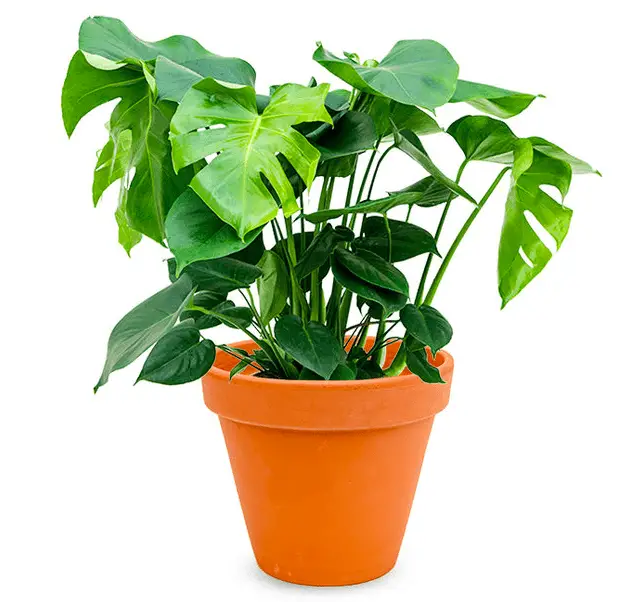
2. Rubber Fig (Ficus Elastica)
The Rubber Fig is a popular houseplant that originates from India and Malaysia. It gets its name from the thick, rubbery texture of its leaves. This plant is known for being low-maintenance and easy to care for. Rubber Figs prefer bright, indirect light but can also tolerate low light conditions. They should be watered when the soil is dry to the touch and allowed to drain completely.
Rubber Figs are a great choice for beginner plant parents or anyone looking for a low-maintenance houseplant. If you are looking for a plant that will grow quickly, however, Rubber Fig may not be the best choice as it can take several years to reach its full size.
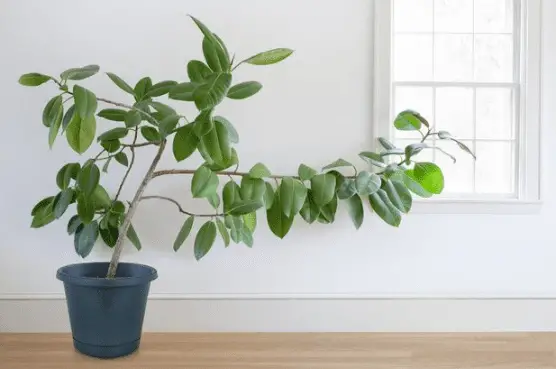
3. Zanzibar Gem (Zamioculcas Plant)
The Zanzibar Gem, or Zamioculcas plant, is a succulent houseplant that is native to Africa. It has dark green, waxy leaves and produces small white flowers. The Zanzibar Gem is an easy-to-care-for plant and is popular for its low maintenance requirements. It can be grown in both indoor and outdoor settings and does well in both sunny and shady areas.
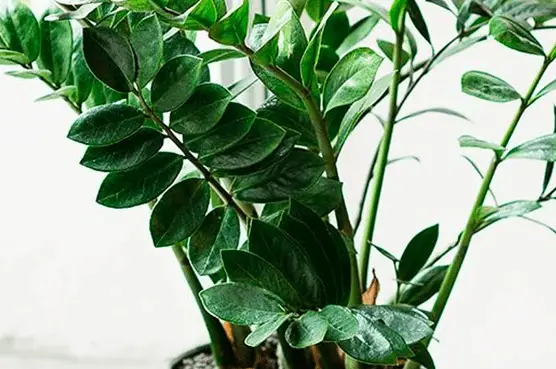
4. Mistletoe Fig (Ficus Deltoidea)
With waxy, triangular leaves, the Mistletoe Fig is a unique-looking houseplant that originates from Southeast Asia. It is an easy plant to care for and does well in both bright and low light conditions. Water Mistletoe Figs when the soil is dry to the touch and be sure to allow the plant to drain completely.
It grows to a few meters tall in the wild, but it’s unlikely for it to reach these heights indoors. Mistletoe Fig is a slow-growing plant, so don’t be alarmed if it doesn’t seem to be growing much in its first few years.
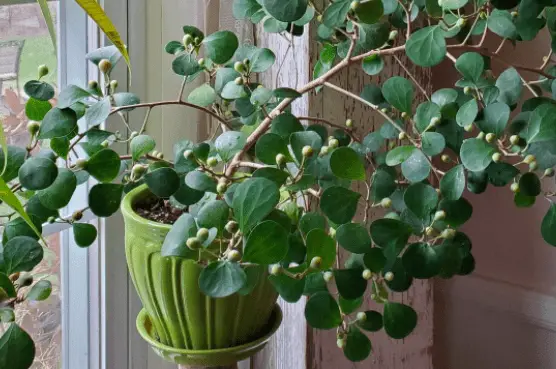
5. Anthurium
Anthurium is a genus of about 1,000 species of flowering plants in the family Araceae, native to tropical regions of the Americas and Asia. It is a popular ornamental plant because of its colorful spathe and spadix flowers.
The generic name Anthurium is derived from the Greek anthos (flower) and oura (tail), referring to the spadix flower’s characteristic tail-like extension. This makes Anthurium a great choice for anyone looking for a low-maintenance houseplant with beautiful flowers.
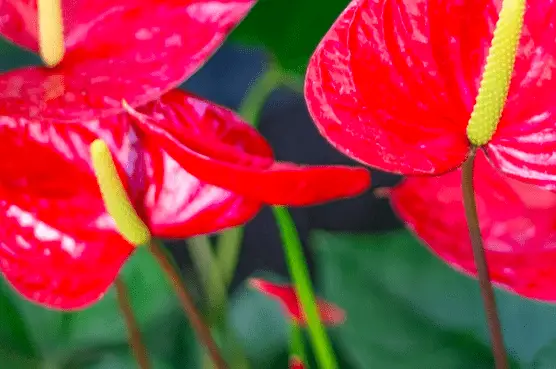
6. Jade Plant (Crassula Spp.)
The Jade Plant is a succulent plant that is native to South Africa. It has thick, fleshy leaves and grows in large clusters. The Jade Plant is popular as a houseplant because it is easy to care for and drought tolerant.
The Jade Plant is also known as the Money Tree or Good Luck Plant. It is said to bring good luck and fortune to those who own it. Some people believe that the leaves of the Jade Plant can be used in feng shui remedies to attract wealth and prosperity into your home.
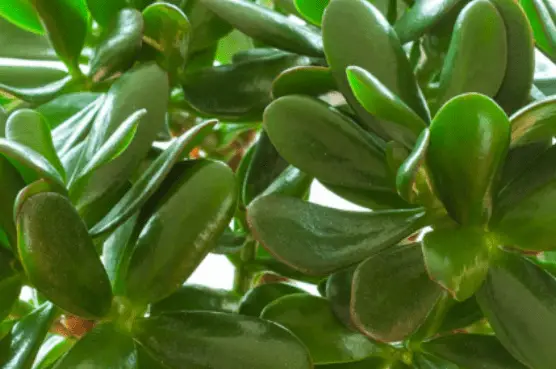
7. Bromeliad
Bromeliad is a member of the plant family Bromeliaceae, which includes about 3,000 species of tropical flowering plants. Many bromeliads are epiphytes, which means they grow on other plants or trees rather than in soil. These attractive and often brightly colored plants are native to South America, Central America, and the West Indies.
The waxy leaves are sharp to the touch and arranged in a rosette pattern. Bromeliads can be grown both indoors and outdoors, but they require special care to thrive. They should be watered regularly, but the soil should be allowed to dry out completely between watering.
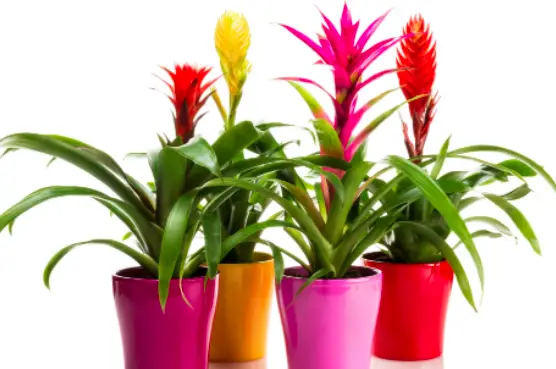
8. Peace Lily
Peace lilies (Spathiphyllum) are a genus of flowering plants in the family Araceae. They are native to tropical regions of the Americas and Asia.
Peace lilies are easy to grow and care for, making them a popular houseplant. They are known for their long-lasting white blooms, which often last up to two months. The leaves of peace lilies are also known for their ability to clean the air by absorbing toxins such as benzene and formaldehyde.
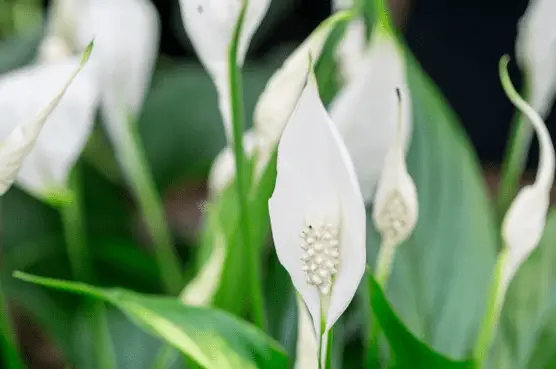
9. Hoya Carnosa
Known as the Wax Plant or Porcelain Flower, Hoya Carnosa is a vine-like plant that is native to Southeast Asia. It has glossy, dark green leaves and small white/pink flowers. The Hoya Carnosa is an easy-to-care-for plant that works well in bright and low light conditions.
The Hoya Carnosa is a fast-growing plant, so it is important to prune it regularly to keep it under control. It is also a climbing plant, so be sure to provide it with something to climb on if you want it to stay healthy and happy.
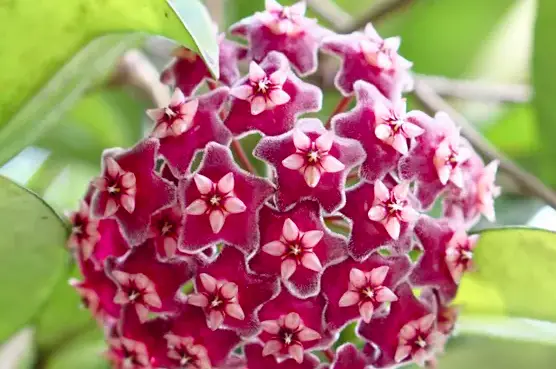
10. Heartleaf Ice Plant (Mesembryanthemum Cordifolium)
The Heartleaf Ice Plant is a succulent plant that is native to South Africa. It has thick, fleshy leaves and grows in large clusters. The Heartleaf Ice Plant is popular as a houseplant because it is easy to care for and drought tolerant. The Heartleaf Ice Plant gets its name from the shape of its leaves, which are heart-shaped.
The Heartleaf Ice Plant produces bright pink/red flowers that bloom in the summer. This makes it a great plant to add color to your home during the warmer months.
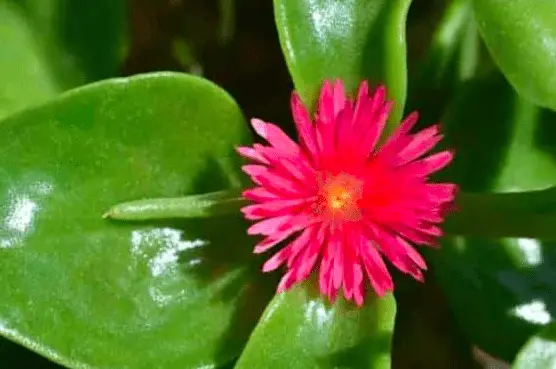
11. Carissa Holly
The Carissa Holly is a shrub that is native to Africa. It has dark green, glossy leaves, and small white flowers. The Carissa Holly is an easy-to-care-for plant that works well in bright and low light conditions.
Many gardeners grow it as a hedge plant because of its dense growth habit. It is slow growing, so it does not require much maintenance or pruning. The Carissa Holly is also known to be fairly deer resistant, making it a good choice for those who live in areas where deer are a problem.
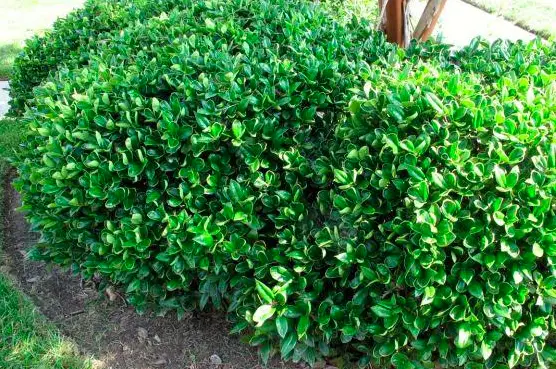
12. Swedish Ivy
Swedish ivy (Plectranthus australis) is a fast-growing, evergreen vine that hails from the tropics. This popular houseplant is prized for its easy care and bright foliage, which features attractive variegated leaves.
While Swedish ivy is typically grown as a trailing or cascading plant, it can also be trained to climb vertical surfaces. Whether you’re looking to add a splash of green to your indoor space or create an outdoor living wall, Swedish ivy is a great choice!
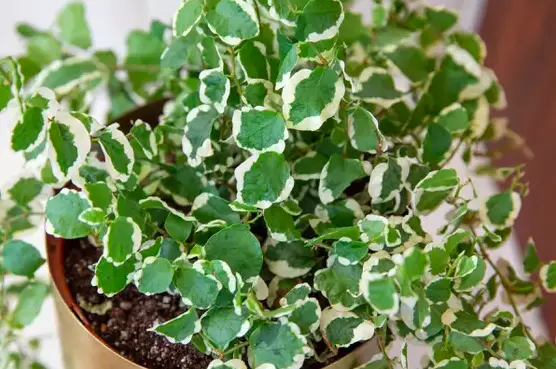
13. Radiator Plant (Peperomias)
The radiator plant, also known as a peperomia, is a popular indoor plant that’s often used in decorating because of its interesting leaves. The plant is easy to care for and doesn’t require much light, making it a good choice for people who don’t have a lot of experience with plants.
One thing to keep in mind if you’re thinking about purchasing a radiator plant is that they can be quite toxic to cats and dogs. So if you have pets, it’s important to make sure they don’t have access to the plant.
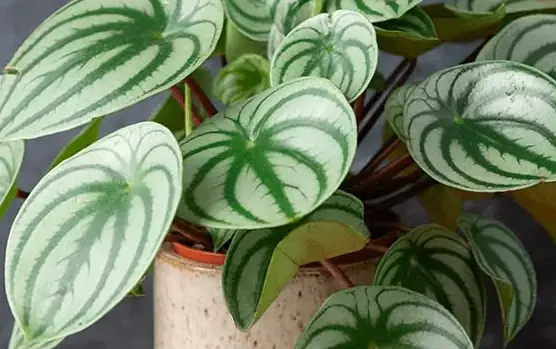
14. Pothos
Answer: Pothos plants (Epipremnum aureum) are easy-to-care-for houseplants that can brighten any indoor space. These vining plants are native to the tropical forests of Southeast Asia and thrive in warm, humid conditions. While pothos can tolerate lower light levels, they will grow best in bright, indirect sunlight.
Pothos plants are very versatile and can be grown as either trailing or climbing vines. To encourage your pothos to climb, simply provide them with support such as a trellis or piece of string.
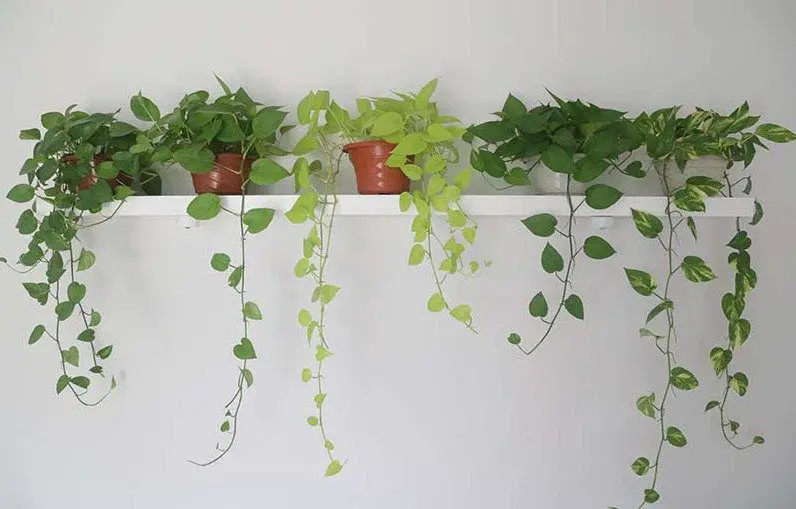
15. Echeveria Succulent
Echeveria is a large genus of succulent plants native to the mountains of Central America. The genus comprises over 120 species, which are commonly known as hen and chicks plants. Echeveria is characterized by its fleshy leaves, which grow in rosettes. The leaves are often brightly colored, and the flowers are borne on stalks.
Echeveria succulents are popular houseplants, due to their ease of care and striking appearance. Many species of Echeveria can be easily propagated from leaf cuttings, making them even more popular with gardeners and plant enthusiasts.
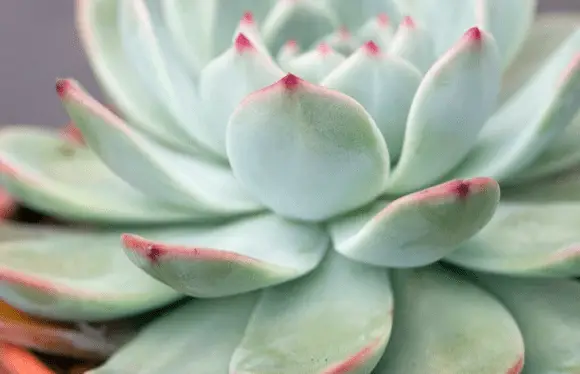
Where to Buy Plants with Waxy Leaves?
If you’re looking for a place to buy houseplants with waxy leaves, we recommend starting your search at your local nursery or garden center. You can also find these plants online from many different retailers. When shopping for plants online, be sure to read the plant descriptions carefully so that you choose a plant that will thrive in your home.
Etsy can be a great place to find rare and unique plants, especially if you’re looking for a collector’s item. However, be aware that the prices on Etsy can be higher than what you would find at a nursery or garden center.
What to Look for When Buying Plants with Waxy Leaves?
When shopping for houseplants with waxy leaves, there are a few
How to Care for Plants with Waxy Leaves?
The specific care required will depend on the plant species. However, many waxy plants are able to store water in their leaves, which means they don’t need to be watered as often as other plants.
When watering your waxy plant, check the soil before adding water. Allow the top few inches of soil to dry out before watering again. In general, it’s best to err on the side of underwatering rather than overwatering.
In addition to watering, you will also need to provide your plant with the appropriate amount of light. Again, this will vary depending on the plant species. Most waxy plants prefer bright, indirect light. However, some species can tolerate low-light conditions, like the pothos.
Conclusion
In conclusion, houseplants with waxy leaves are a great choice for people who are looking for an easy-to-care-for plant. These plants are available from many different retailers, and the care requirements will vary depending on the plant species.
Be sure to read the plant descriptions carefully before purchasing, so that you choose a plant that will thrive in your home. Do you have a houseplant with waxy leaves? We’d love to hear about it in the comments below!
Tim is an avid gardener from the UK. He was the founder of PlantCarer.com from 2021 to Sep 2023. He sold PlantCarer.com to Aaron. He has since started his own business called Seed To Supper, which provides new gardeners all the materials you need in a box (pots, seeds, compost and instructions) to grow your own delicious and nutritious vegetables and herbs from start to finish – no garden required.









0 Comments